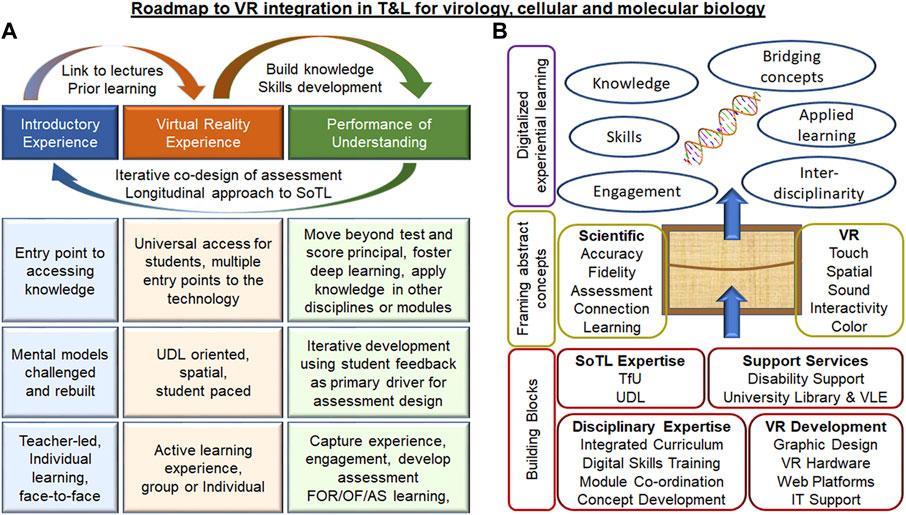Overcoming Challenges in integrating VR/AR into Curricula: Practical Solutions for schools
Virtual Reality (VR) and Augmented Reality (AR) technologies are revolutionizing the way students learn, making education more engaging, interactive, and effective. However, integrating VR/AR into school curricula is not without its share of hurdles. From budget constraints to lack of expertise, educators often face significant barriers when trying to adopt immersive learning technologies. This in-depth article explores common VR/AR integration challenges and offers practical solutions,real-life examples,and actionable tips,helping schools make a smooth transition into the future of education.
Why Integrate VR/AR into School Curricula?
Before diving into the challenges and solutions, let’s look at the compelling reasons why VR and AR in education are worth the effort:
- Enhanced Engagement: Immersive environments hold students’ attention and inspire active participation.
- Deeper Understanding: 3D models,virtual field trips,and interactive simulations make abstract concepts tangible.
- Increased Accessibility: VR/AR can bring experiences like lab experiments or historical site visits to any classroom.
- Personalized Learning: adaptive VR/AR apps adjust to individual learning speeds and styles.
Common Challenges in Integrating VR/AR into Curricula
While the benefits of VR/AR in schools are clear, seamless integration faces persistent hurdles:
- High Initial Costs: Hardware, software, and training can stretch already tight school budgets.
- Lack of Teacher Training: Many educators are unfamiliar with operating or effectively using VR/AR tools.
- Curriculum Alignment: Finding or creating VR/AR resources that fit existing educational standards can be time-consuming.
- Technical issues: Internet connectivity,device compatibility,and maintenance challenges are common.
- Equity Concerns: Ensuring equal access for all students, nonetheless of socioeconomic background, remains a concern.
- Health and Safety: Issues like motion sickness or eye strain need to be addressed carefully.
Practical Solutions for Overcoming VR/AR Integration Challenges
Schools eager to embrace immersive learning technologies can employ these actionable strategies:
1. Starting Small and Scaling Up
- Pilot Programs: Begin with one classroom or a single subject,measure impact,then expand gradually.
- Shared devices: Use mobile VR/AR kits or schedule devices across classes to reduce initial investment.
2.Leveraging Affordable and Accessible Solutions
- Low-Cost Hardware: Cardboard VR viewers or tablets for AR are budget-pleasant starting points.
- Free or Subsidized Software: Leverage open-source or educator-discounted VR/AR apps and platforms.
3. professional Progress and Training
- Invest in ongoing teacher workshops and peer training sessions.
- Encourage teacher participation in online VR/AR educator forums and communities.
- Appoint VR/AR champions or “technology ambassadors” among staff.
4. Aligning VR/AR Content with Curriculum Goals
- Work with publishers or developers to customize immersive experiences to local curricula.
- select flexible tools that allow teachers to create their own content or scenarios.
- Integrate VR/AR into existing lesson plans rather than making them standalone activities.
5. Ensuring Equity and Accessibility
- Prioritize web-based AR experiences accessible on students’ personal devices.
- Schedule regular VR/AR device rotation so all students have access.
- Seek grants, community partnerships, or district funding to acquire equipment for underserved groups.
6. Addressing Health and Safety Concerns
- Set clear guidelines: Limit session durations and provide regular breaks.
- Choose applications with gentle motion and clear graphics.
- Monitor for discomfort and be ready to offer alternatives.
First-Hand Experiences: Schools Making VR/AR Work
Case Study: Immersive History at Lincoln Middle School
lincoln Middle School in Oregon began integrating VR into their social studies curriculum through a pilot program using Google Expeditions and low-cost VR headsets. Teachers received a half-day workshop and ongoing support. The result? Students were able to “visit” ancient Rome and Egypt,leading to a 30% increase in engagement and retention,as measured by end-of-unit assessments.
Case Study: Collaborative Science in a High School Lab
At Jefferson High, AR-enabled tablets allowed biology students to manipulate 3D models of cells and viruses. The science department worked closely with app developers to align content to the local standards, integrating AR experiences directly into lab instructions. Teachers reported faster understanding of complex concepts and improved collaborative learning.
Benefits of Integrating VR/AR into School Curricula
Beyond overcoming challenges, schools embracing immersive technology in education experience significant advantages:
- Improved Knowlege Retention: Studies show that immersive experiences can double retention rates.
- Real-World Skills Development: VR/AR promotes spatial reasoning, technical literacy, and even empathy via role-play scenarios.
- Accessible Exploration: Students with physical disabilities can engage in activities like virtual field trips or dissections.
- enhanced Collaboration: Multi-user VR platforms encourage teamwork — locally and globally.
Tips for Successful VR/AR Integration in Schools
- involve Stakeholders Early: Engage teachers, IT staff, students, and parents from the start.
- set Realistic Goals: Identify clear learning outcomes and success criteria for your VR/AR initiatives.
- Monitor Progress & Gather Feedback: Use surveys, student reflections, and data to tweak and improve your approach.
- Celebrate Successes: Share student projects and achievements to build school-wide excitement and buy-in.
Conclusion
Integrating virtual and augmented reality into school curricula is a journey filled with challenges,but the rewards are immense. By starting small, choosing scalable and cost-effective solutions, investing in professional development, and making intentional curriculum alignments, schools can harness the real potential of VR/AR technologies. Above all, a collaborative approach—sharing successes, learning from setbacks, and keeping students’ needs central—will light the path toward a truly immersive and equitable educational future. Your school’s next step toward innovation starts today—embrace VR/AR, and prepare your students for the world of tomorrow!

